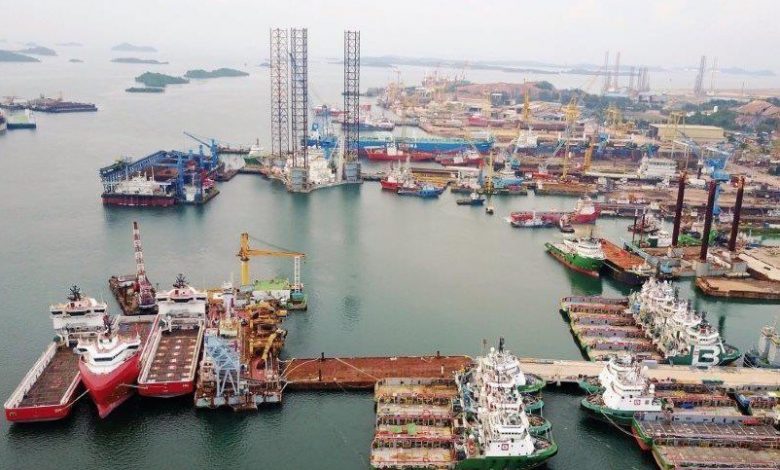Survey suggests shipping is heading towards record lay-up territory

Splash chief correspondent Jason Jiang looks at how owners are dusting off lay-up plans.
The continued outbreak of coronavirus has forced shipowners to implement various measures to control their operating costs in order to stay in business with many of them starting to look at options to lay up their vessels.
Nearly two thirds of Splash readers in an ongoing poll reckon that the global economic meltdown from the so-called Great Lockdown will result in a record number of ships heading into lay-up in the coming 18 months.
In a recently released report, classification society Lloyd’s Register (LR) states that containerships as well as passenger and cruiseships are among the first in the maritime sector deciding to lay-up and are becoming reacquainted with regulatory and technical measures to prepare and protect vessels whilst out of service, with the volume of lay-ups already in place not seen since the global financial crisis of 2008 and 2009.
According to LR, most containership and passenger vessel owners are looking at hot or warm lay-up options, which allow a vessel to be quickly reactivated and returned to service within 24 hours to a week.
“Whether lay-ups are greater than 2009 when numbers surpassed 1,000, is uncertain; many owners don’t immediately confirm the status of their ships. But already there are indications that Covid-19 presents greater challenges for seaborne trade, suggesting that lay-ups will become a feature dominating shipping over 2020,” the LR report states.
Japan’s Mitsui OSK Lines (MOL), one of the world’s largest shipowners, also recently announced measures to deal with potential cash flow issues due to the coronavirus outbreak.
“Although freight and other income are expected to fall as a result of decline in shipments, we will endeavour to generate funds through the lay-up or redelivery of vessels under short term time charters, the freezing of new investments, in principle, and the disposal of assets in addition to the reduction of operating expenses starting with saving on fuel costs as a result of vessel slowdown,” MOL stated in a recent release.
In March, major car carrier operator Wallenius Wilhelmsen announced plans to place up to 10 vessels in cold lay-up and send another four vessels for demolition.
Bjornar Andresen, chief underwriting officer at Gard, is seeing some warm lay-ups in the cruise, ferry and containers sectors, as well as the offshore market which has been in lay-up territory for a long time now.
“The premium paid for vessels that are moored in excess of 30 days in the same position without cargo is reduced, but that reflects reduced risks that vessels face in this situation,” Andresen says.
Nicolas White, a senior consultant at London Offshore Consultants, also agrees that the market will see more hot lay-ups as owners have no way to repatriate crews at this time.
Carl Schou, CEO and president of Wilhelmsen Ship Management, says the company has received inquiries for more than 100 ships for lay-up management.
“I think many are cautious about the future and are checking the options available in light of the uncertainty ahead,” Schou says.
However, Schou believes the surge pattern of vessels being laid up seldom correlates immediately with a crisis; history shows shipowners tend to avoid lay-ups for as long as possible.
“I think there are many factors that could influence the decision to lay-up a vessel such as the type of charter the vessel is on, charter rates, age of the vessel, price of scrap metals and many other variables that owners take into consideration. Right now, we are getting request from all segments. So it is hard to say which segment is hardest hit by this pandemic,” Schou says.
The unique situation at present has been exacerbated by the protracted closure of most shipbreaking yards in south Asia which have been off-line for weeks thanks to Covid-19-related work restrictions in India, Pakistan and Bangladesh.
To go down the lay-up route is, in the mind of many owners, an absolute last resort, something touched upon in typically wry fashion last month by Andrew Craig-Bennett, Splash’s lead columnist, who wrote: “Don’t put a passenger ship or a dive support ship into cold lay-up or you will discover the truth of the Ancient Greek proverb, ‘Once in lay-up, always in lay-up!’ Think about what is needed to reactivate laid up ships and plan accordingly.”
Gary Woolley, managing director at Singapore-based Marine Layup Services, says most owners are still doing costing exercises at this stage and hoping for the situation to get better.
Ralph Leszczynski, global head of research at Banchero Costa, holds the view that the really serious impact of the Covid-19 crisis is really on all the passenger sectors – cruise and ferry – which are completely devastated at the moment with all the lockdown and travel restrictions in place.
According to Leszczynski, the container trade is being hit primarily by the demand slowdown in Europe and the US, more than the supply crunch in Asia.
“Nevertheless, container demand is down by some 10% year-on-year or something like that. And containership lines will have to somehow adjust capacity to reflect this new reality for the time being,” Leszczynski says.
At the Maersk Q1 results yesterday, the Danish carrier revealed it had idled almost 10% of its fleet capacity at the end of March. It plans to take more vessels out of service to match the slowdown in container trade and keep freight rates from falling.
As for the dry bulk market, Leszczynski reckons it is far from bring a total disaster despite the market not performing well at the moment and he doesn’t expect many lay-ups in the segment.

Indeed a most informative article, covering most trade fleets.
Assessment of breakbulk fleets is very astute. Agree on this.